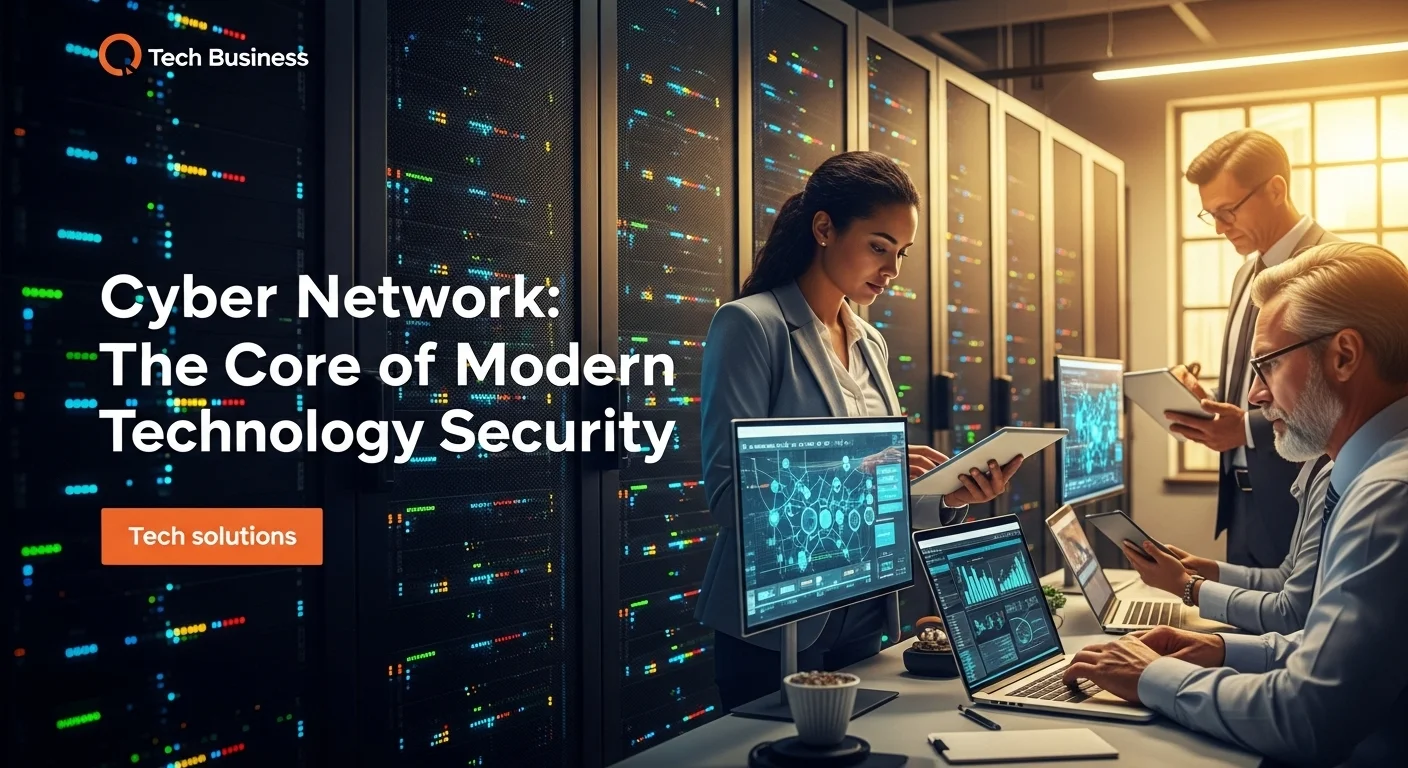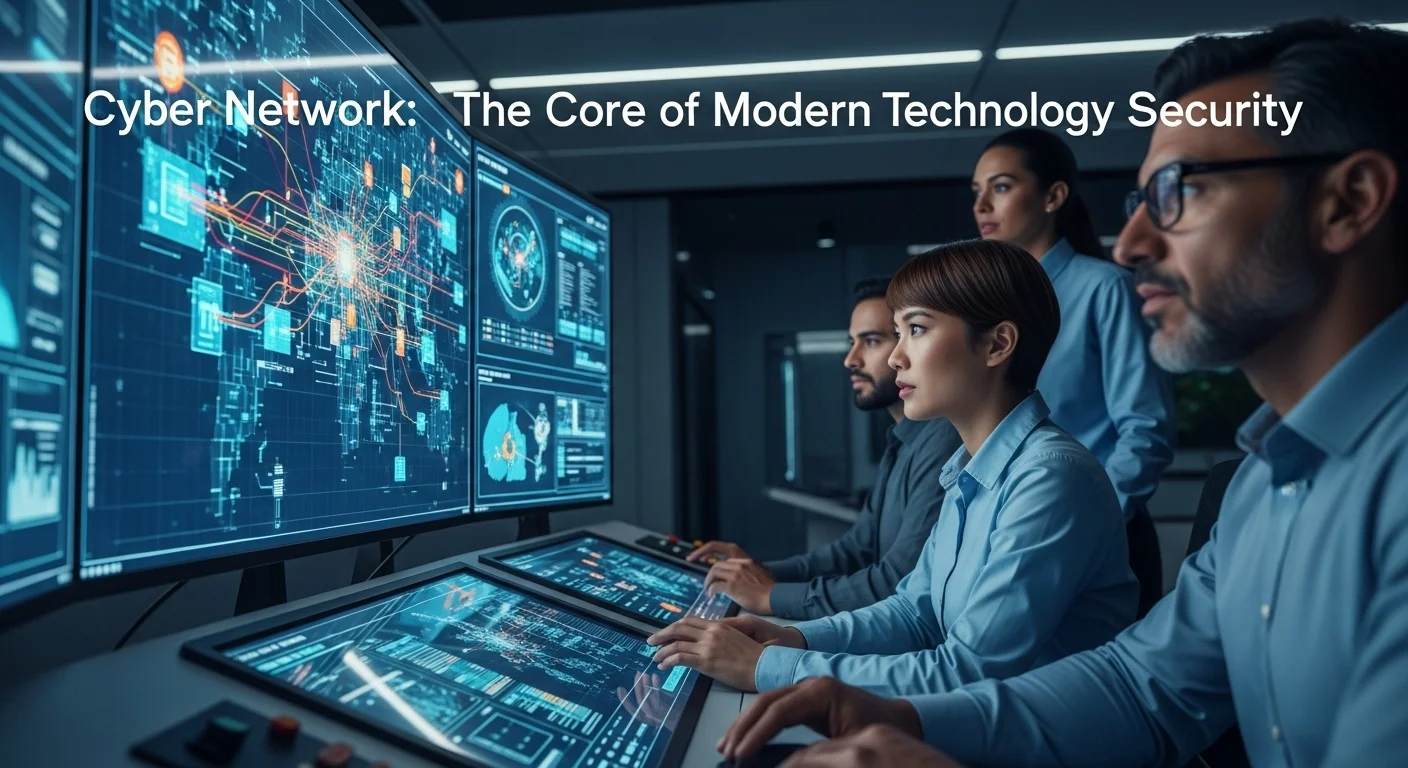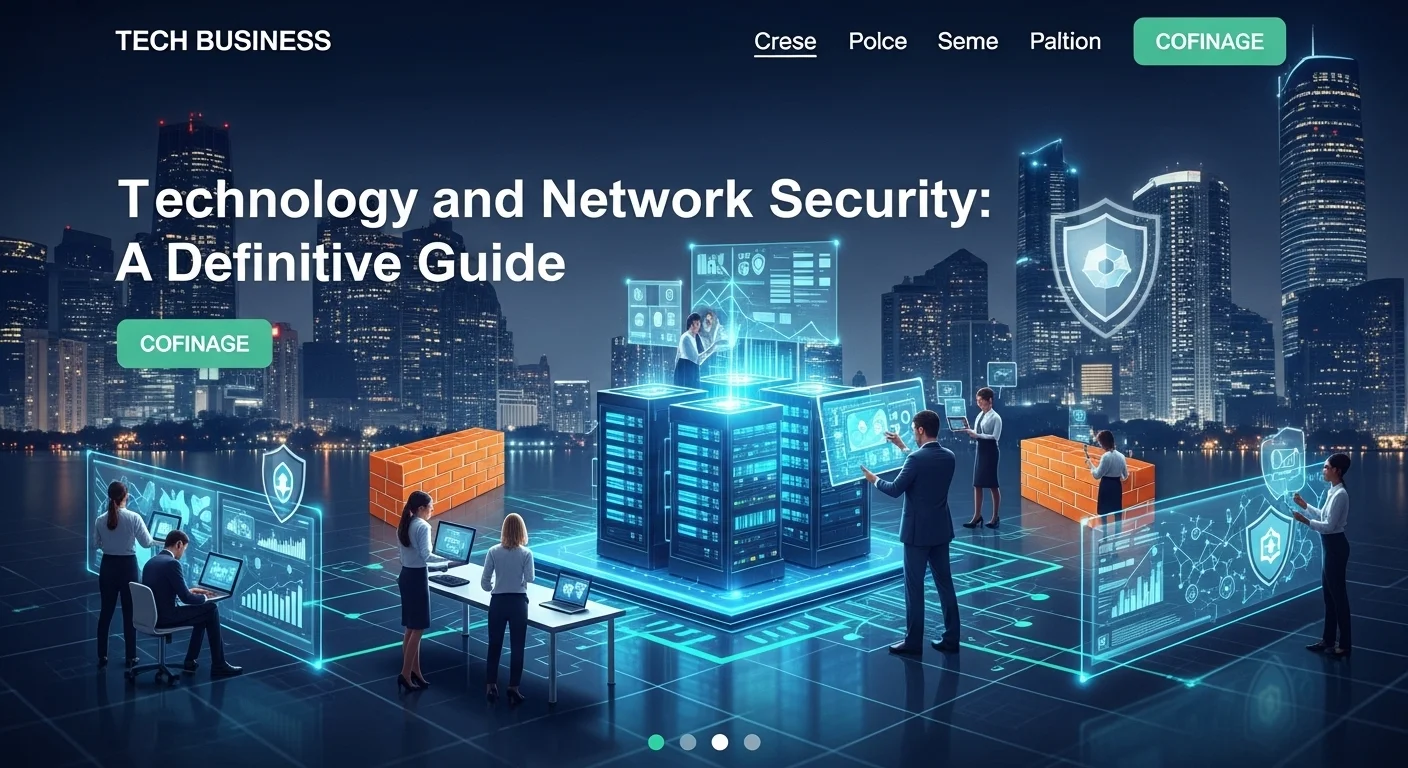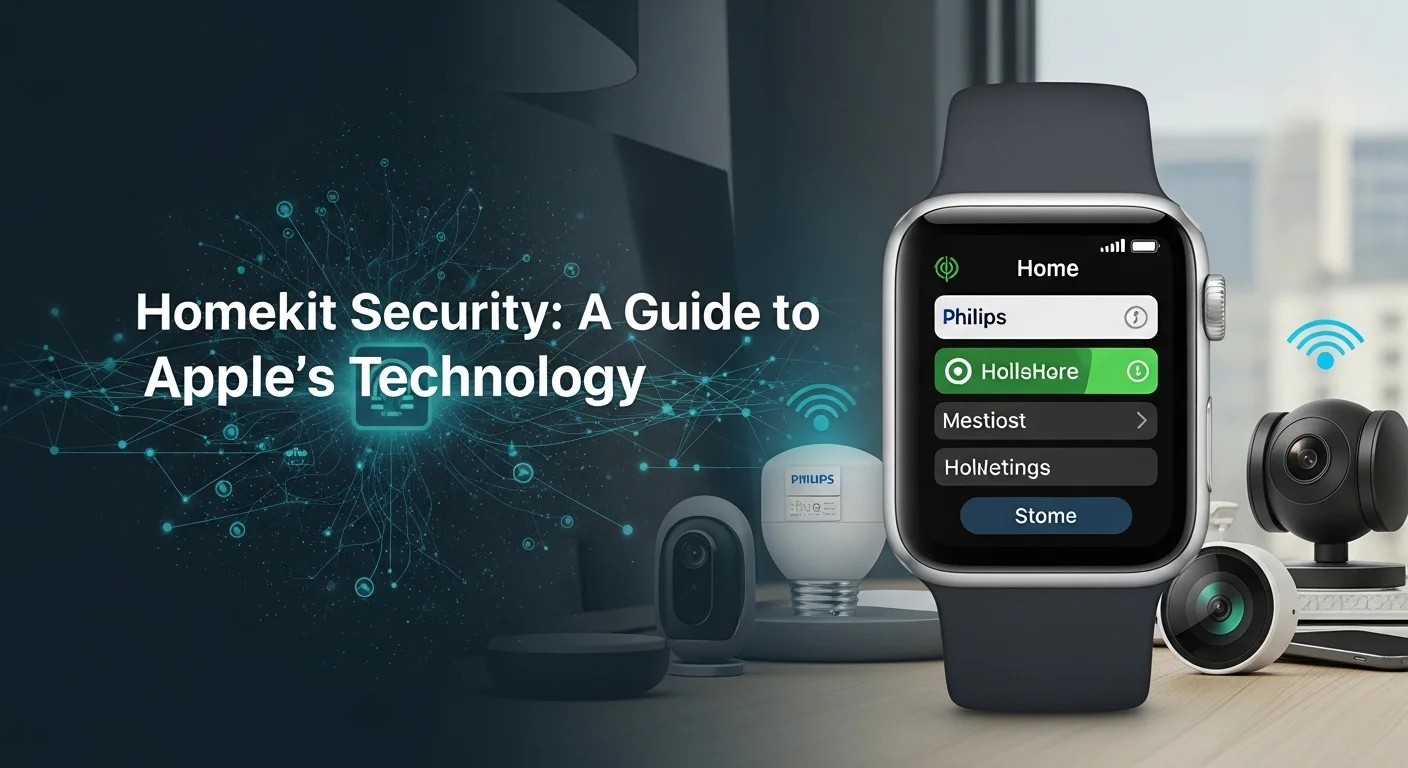What is a Cyber Network? A Plain-English Guide to Securing Your Digital World

Executive Summary
In my years working in digital security, I've noticed one term that often causes confusion: 'Cyber Network'. It sounds complex, like something only for IT wizards. But in reality, it's the foundation of our modern world, the digital nervous system connecting everything from your office computers to the global cloud. Think of it as the invisible infrastructure where all your data lives and travels. For any business today, understanding this network isn't just an IT chore; it's a core business strategy. It's about protecting your valuable data, enabling powerful tools like AI, and building a resilient company. This article will demystify the cyber network. We'll break down what it is, why it's so important for your business, and most importantly, how to keep it safe and secure in a way that makes sense for everyone, not just the tech experts.
Table of Contents
Table of Contents
What Exactly is a Cyber Network?
Let's cut through the jargon. A 'Cyber Network' is simply the modern term for the vast web of computers, servers, devices, and the connections between them that exist in the digital world, or cyberspace. I remember when we just called them 'computer networks.' But the term evolved because these networks are no longer confined to a single building. They are now connected to the internet, which changes the game completely. It's this connection to the outside world that makes a network a 'cyber' network—it brings incredible power but also exposes it to risks from across the globe. Its main job is simple: to let us share information, communicate, and collaborate. Every email you send, every file you download, every video call you join happens because of this intricate digital fabric.
The Big Leap: From Local Office Networks to the Global Web
Not too long ago, most company networks were like isolated islands. They were 'intranets,' designed purely for internal use. The internet changed everything, connecting these islands into one massive, global system. This was a revolution for business. A small shop in Ohio could suddenly sell to someone in Japan. But this connectivity came with a price. Opening the doors to the world also meant opening them to potential threats. This is where the practice of cyber network security became absolutely essential. It’s all about protecting the integrity and privacy of these networks from attacks or unauthorized snooping. I like to explain the relationship between network security and cyber security this way: think of cybersecurity as protecting your entire castle—the people, the treasures, the secrets inside. Network security is specifically about guarding the roads, bridges, and gates leading to that castle. You can't have a secure castle if the roads leading to it are wide open for anyone to use.
The Building Blocks of a Modern Cyber Network
A modern cyber network is a mix of physical hardware and sophisticated software. The hardware includes the obvious things like routers, servers, firewalls, and all the devices we use daily, like laptops and phones. The software side is the magic that makes it all work: operating systems, communication rules (protocols like TCP/IP), and countless applications. The importance of this whole setup is immense. It’s the platform for today's biggest tech trends:
- Cloud Computing: Services like Amazon Web Services or Microsoft Office 365 rely entirely on massive, secure cyber networks to deliver their apps and storage to you.
- Artificial Intelligence (AI): AI needs a constant diet of huge amounts of data. Cyber networks are the delivery system that feeds data to these powerful algorithms for training and operation. Securing them is crucial to prevent bad data from corrupting the AI.
- Internet of Things (IoT): Every smart thermostat, security camera, and factory sensor is now part of our network. I've seen how this explosion of devices has dramatically increased the number of potential entry points for attackers, making strong cyber security network security a must-have.
- Day-to-Day Business: From sending invoices to managing customer relationships, virtually every part of a modern business runs on its cyber network. When the network goes down, the business stops. I’ve seen it happen, and the financial and reputational costs can be staggering.
Why Security is Non-Negotiable for Your Business Network
For any business, your cyber network is both a priceless asset and a major vulnerability. Protecting it is so critical that we now approach it with an integrated mindset, blending cyber and network security. You can't protect your data (cybersecurity) if you don't secure the paths it travels on (network security). The benefits of doing this well are huge. It protects your trade secrets and customer information. It prevents costly downtime from ransomware or other attacks. It builds trust with your customers—no one wants to do business with a company that can't protect their data. And increasingly, it's a legal requirement. Regulations like GDPR carry heavy fines for non-compliance. Securing a network is about creating layers of defense: firewalls as the outer wall, antivirus on devices, and systems that watch for suspicious activity. But it's not just about tech. It's about people. Training your team to spot scams and having a clear plan for when things go wrong are just as important. In short, your cyber network is the engine of your business. Keeping it secure isn't just an IT problem; it's a strategic imperative for survival and growth in our digital world.

A Practical Guide to Cyber Network Solutions for Your Business
Moving from theory to practice is where things get interesting. Over the years, I've helped countless businesses navigate the world of cyber networks, and the goal is always the same: build a strong defense that protects the company without slowing it down. A solid cyber network security strategy isn't about locking everything down; it's about enabling the business to thrive safely. This means blending the right technology with smart business practices.
The Technical Toolbox for a Secure Network
In security, we have a concept called 'defense-in-depth.' It's the simple idea that you should have multiple layers of security, so if one fails, another is there to catch the threat. It's like having a lock on your door, a security alarm, and a dog. Here are the key technical tools in our toolbox:
- Firewalls: This is your front door security. A modern firewall doesn't just block or allow traffic; it intelligently inspects it to understand what applications are being used and can spot threats hiding in legitimate-looking data.
- Intrusion Detection & Prevention Systems (IDPS): Think of these as your 24/7 security guards. They constantly watch the network for suspicious behavior and can either sound an alarm (detection) or actively block the threat (prevention). They are critical for catching things that might slip past the firewall.
- Virtual Private Networks (VPNs): With so many people working remotely, VPNs are essential. They create a secure, encrypted tunnel from a user's device back to the company network, making it safe to work from anywhere.
- Network Segmentation: This is one of my favorite strategies because it’s so effective. Instead of having one big, flat network, you divide it into smaller, isolated zones. If an attacker gets into one zone, say the guest Wi-Fi, they can't easily jump over to a sensitive area like your finance department's servers.
- Zero Trust Architecture (ZTA): This is a modern philosophy that is changing how we do security. The old model was 'trust but verify.' Zero Trust is 'never trust, always verify.' It means every single request to access a resource is checked and authenticated, regardless of whether it's coming from inside or outside the office. It's a huge step forward for cyber and network security.
- Encryption: This is the art of scrambling data so it's unreadable to anyone without the key. Data should be encrypted when it's moving across the network ('in transit') and when it's being stored on a server ('at rest').
- Endpoint Security: Every laptop, server, and phone is an 'endpoint.' Strong endpoint security software is like having a dedicated bodyguard for each device, protecting it from viruses and malware.
Smart Business Strategies for Network Management
The best technology in the world can be defeated by human error. That's why effective cyber security network security is as much about people and planning as it is about software. Here are the business techniques I always recommend:
- Regular Risk Assessments: You can't protect what you don't know you have. You need to regularly ask: What are our most important digital assets? What are the biggest threats to them? And where are we most vulnerable? Answering these questions helps you focus your time and money where they'll have the biggest impact.
- A Clear Security Policy: This is your rulebook. It should be written in plain English and cover everything from password requirements to how to handle sensitive data. Everyone in the company should read and understand it.
- An Incident Response Plan: Sooner or later, a security incident will happen. Having a plan ready before it does is the difference between a manageable problem and a full-blown crisis. Your plan should detail exactly who to call and what steps to take to contain the damage and recover quickly.
- Continuous Employee Training: Your employees are your first line of defense. I've found that ongoing, engaging training—like simulated phishing tests—is far more effective than a once-a-year presentation. It builds a culture where everyone feels responsible for security.
- Vendor Security Checks: Your security is only as strong as your weakest link, and sometimes that link is a partner or supplier. Before you give any third party access to your network or data, you must check that their security practices are up to your standards.
Resources and Making the Right Choice
Deciding how to implement all this can be tough. The choice often comes down to budget, team expertise, and your specific needs.
- In-House vs. Cloud Security: Managing security on your own servers gives you total control but is expensive and requires a skilled team. Cloud-based security services are often more affordable, scalable, and easier to manage, making them a great choice for many businesses.
- Open-Source vs. Commercial Tools: Commercial tools from big names offer great features and support but come with a price tag. Open-source tools can be just as powerful and are free, but they require more technical skill to set up and maintain.
- Managed Security Service Providers (MSSPs): If you don't have a dedicated security team, an MSSP can be a lifesaver. These are expert firms that manage your security for you, providing 24/7 monitoring and response. They handle the complexities of network security in cyber security, so you can focus on running your business.
Building a secure cyber network is a journey, not a destination. It's about combining the right tech with smart strategies and constantly adapting. By doing so, you can turn your network into a secure foundation for growth.

Actionable Tips to Enhance Your Cyber Network Experience
Once your network is set up and secure, the job isn't over. In my experience, the difference between a good security posture and a great one lies in continuous improvement and proactive habits. It's about making security a part of your daily operations, not an afterthought. Here are some practical tips, tools, and insights to elevate your technology experience by mastering the fusion of cyber and network security.
Best Practices for Long-Term Network Health
A healthy network, like a healthy body, requires regular check-ups and good habits. Adopting these practices is fundamental to a resilient cyber network security strategy.
- Schedule Regular Audits and 'Ethical Hacks': Don't wait for a real attacker to test your defenses. I always advise clients to conduct regular security audits to check their setup against industry standards. Even better, hire a 'penetration tester'—an ethical hacker—to simulate an attack. It’s the single best way to find your weak spots before the bad guys do.
- Make Patching a Priority: Out-of-date software is a welcome mat for hackers. Create a strict process for applying security patches to all your systems as soon as they're available. Automate this wherever you can; it closes the window of opportunity for attackers.
- Implement Strong Access Controls: Follow the 'principle of least privilege.' This simply means people should only have access to the data and systems they absolutely need to do their jobs. And please, enable multi-factor authentication (MFA) everywhere you can. It’s one of the most effective controls against account takeovers, even if a password gets stolen.
- Have a Bulletproof Backup Strategy: Your backups are your last line of defense against disasters like ransomware. I swear by the 3-2-1 rule: keep at least 3 copies of your data, on 2 different types of media (like a hard drive and the cloud), with 1 copy stored off-site. Crucially, test your restore process regularly to make sure it actually works.
- Reinforce Employee Training: Security awareness isn't a one-time event. Keep it top-of-mind with regular reminders and simulated phishing campaigns. These controlled tests are fantastic for showing employees what a real phishing attempt looks like and providing instant feedback if they click.
Essential Tools for the Modern Business
The right technology can be a massive force multiplier for your security team, automating tasks and providing incredible visibility. Here are some tools that are transforming cyber security network security:
- SIEM (Security Information and Event Management): A SIEM is your security control center. It gathers log data from all over your network—firewalls, servers, applications—and analyzes it in one place. It helps you spot suspicious patterns and generates alerts, giving you a complete view of what's happening.
- SOAR (Security Orchestration, Automation, and Response): A SOAR platform is the next step up from a SIEM. It lets you create automated 'playbooks' to respond to alerts. For example, if an alert for a virus is triggered, a SOAR can automatically block the infected computer from the network and create a support ticket, all in a matter of seconds.
- XDR (Extended Detection and Response): XDR is the new frontier. It goes beyond protecting individual devices (endpoints) by collecting and correlating data from your entire tech stack—network, cloud, email, and endpoints. This holistic view helps uncover sophisticated attacks that might otherwise go unnoticed.
- CASB (Cloud Access Security Broker): As more work moves to cloud apps like Salesforce or Google Workspace, a CASB acts as a security checkpoint. It sits between your users and the cloud services, enforcing your security policies and protecting your data, no matter where it is.
Improving Through Experience and Quality Resources
We can learn so much from the past. The infamous 2013 Target data breach, for example, started when an attacker got in through an HVAC vendor connected to Target's network. It was a painful but powerful lesson for the entire industry on the importance of network segmentation and vetting your vendors. For every breach you read about, there are thousands of attacks that are stopped every day by companies with strong, proactive security—those are the quiet victories.
To stay ahead, continuous learning is key. One of the best and most trustworthy resources out there, which I recommend to everyone from small business owners to fellow tech pros, is the Cybersecurity & Infrastructure Security Agency (CISA). As a part of the U.S. government, CISA offers a treasure trove of free guides, alerts on new threats, and tools for organizations of all sizes. By combining these best practices, modern tools, and a commitment to learning, you can build a cyber network that is not just secure, but a true enabler of your business goals.
Expert Reviews & Testimonials
Sarah Johnson, Business Owner ⭐⭐⭐⭐
As a small business owner, the term 'cyber network' was always intimidating. This article broke it down well, but I'd love to see a simple checklist for non-tech people.
Mike Chen, IT Consultant ⭐⭐⭐⭐⭐
Solid overview. I'm an IT consultant, and I found the distinction between network security and cybersecurity particularly well-explained. It's a great piece to share with clients who use the terms interchangeably.
Emma Davis, Security Specialist ⭐⭐⭐⭐⭐
Fantastic deep dive! As a security specialist, I appreciate the accuracy and the practical tips on tools like SIEM and SOAR. This is a comprehensive and well-written resource.



